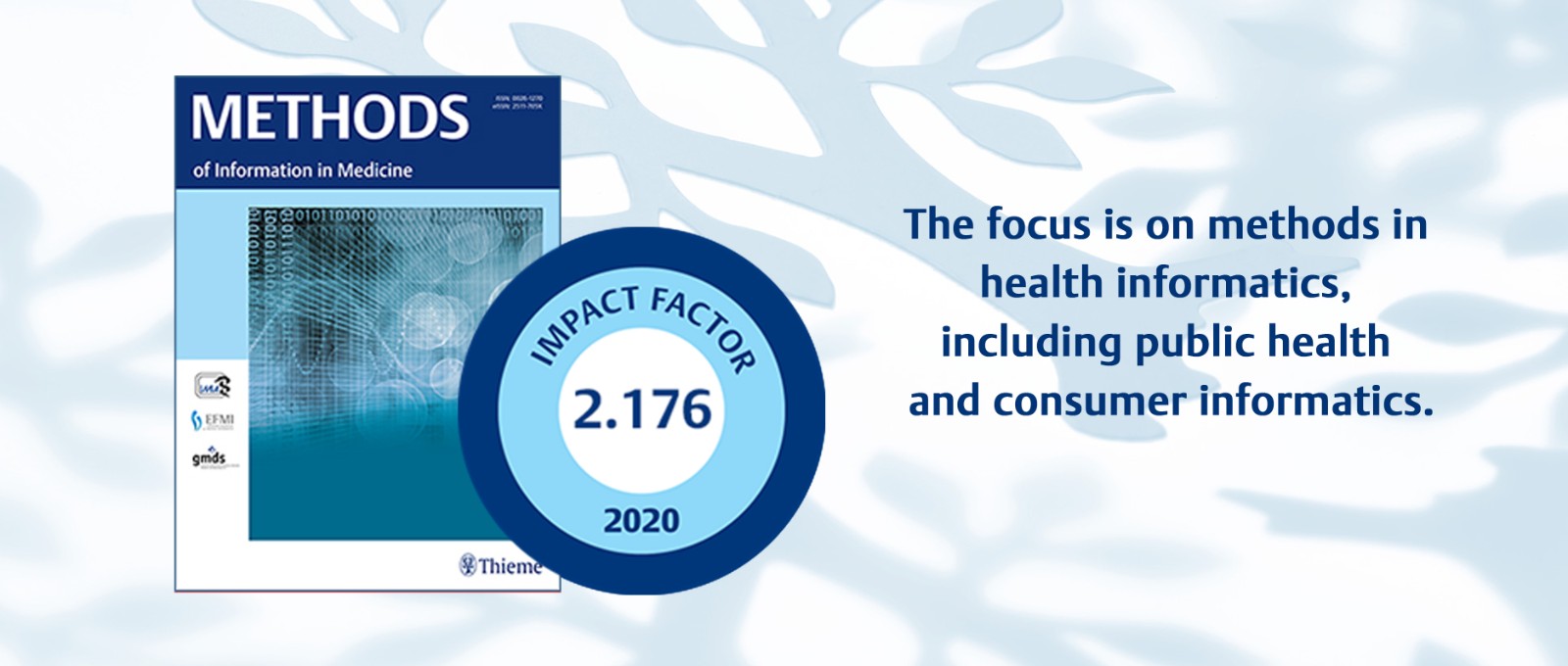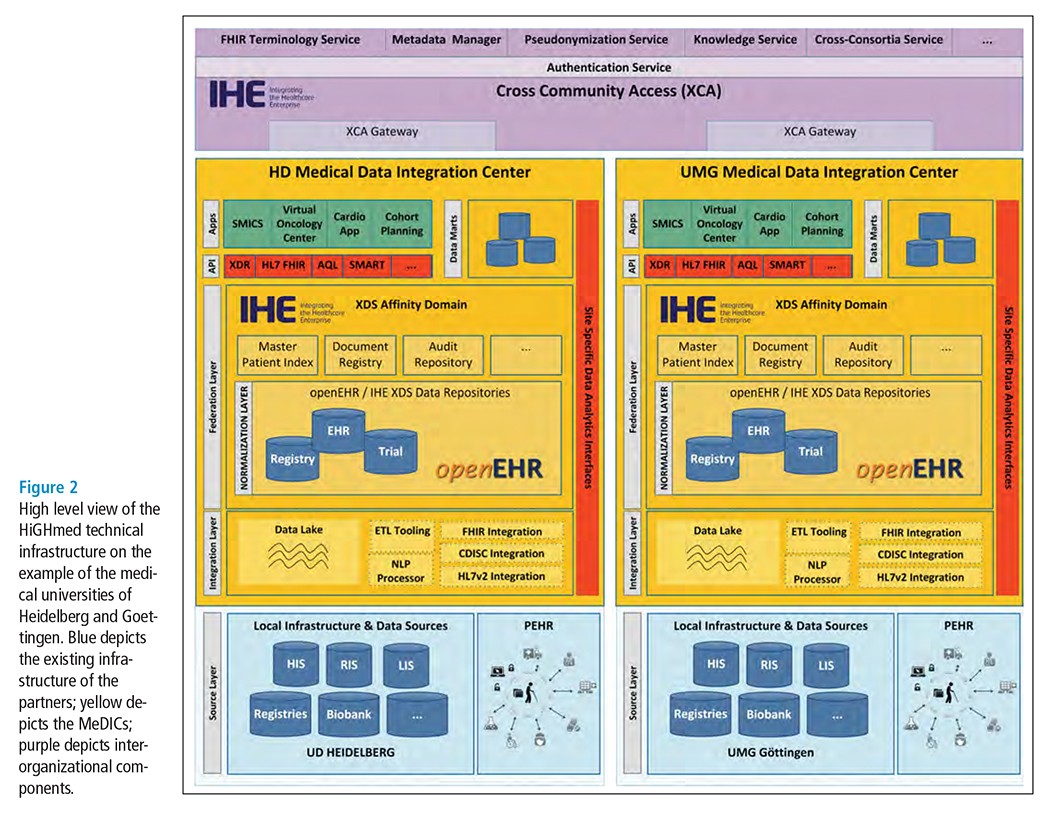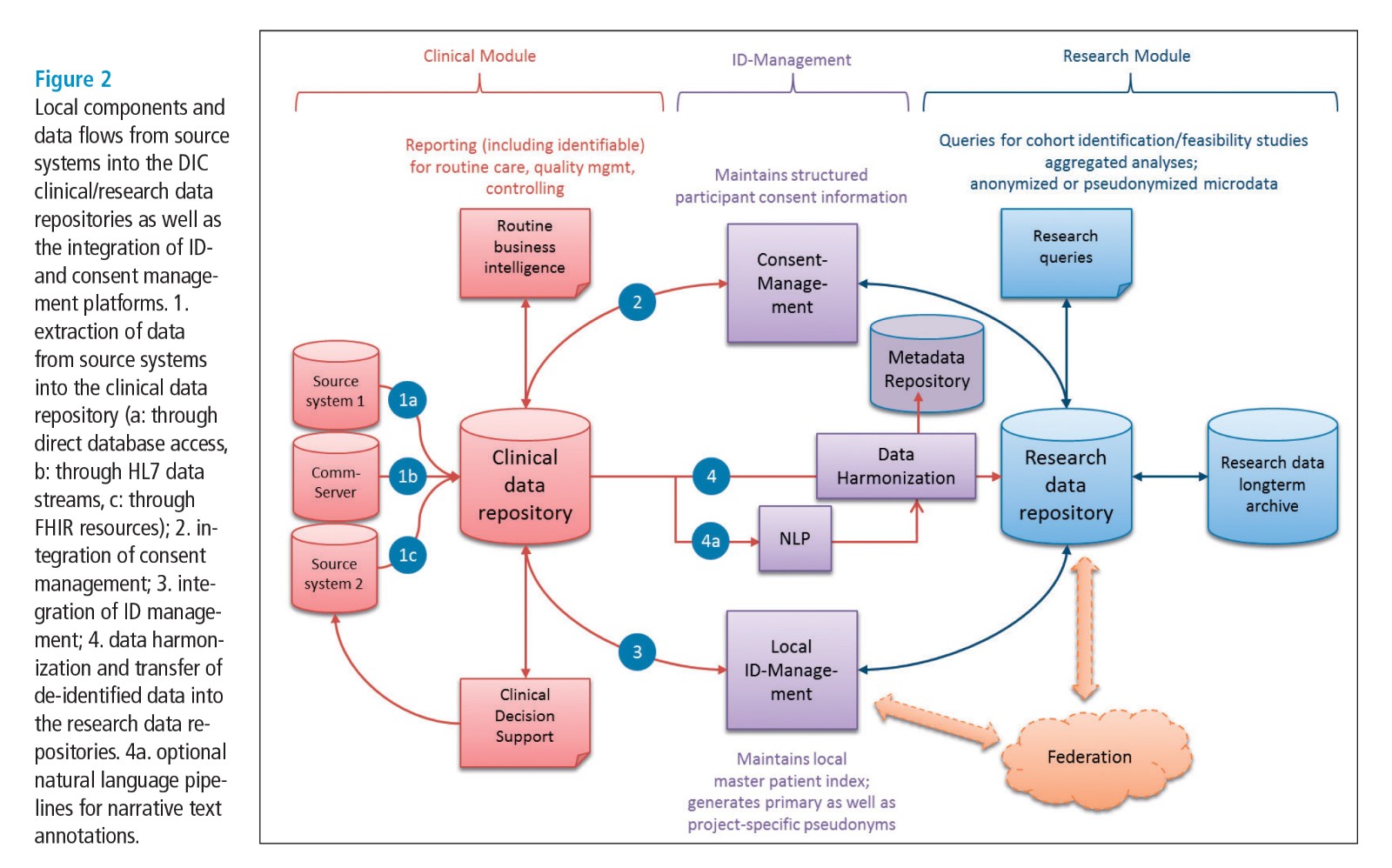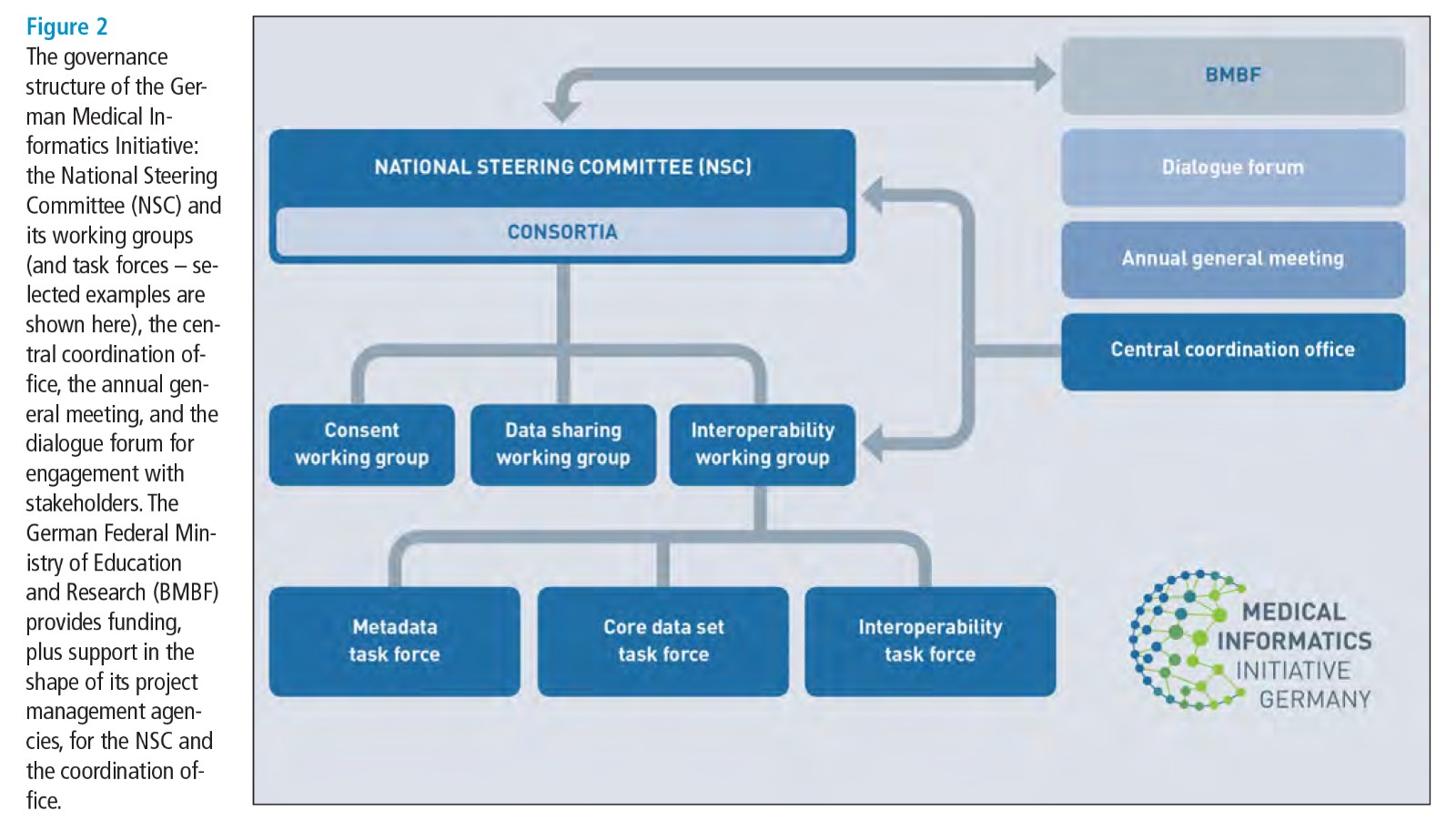

Thieme医学信息学期刊Methods of Information in Medicine的影响因子2020提高到了2.176。非常感谢所有作者、审稿人和编辑的支持和最宝贵的贡献。
以下三篇是被引用次数最多的论文,它们对影响因子的提高有着重要贡献,欢迎免费阅读。
HiGHmed – An Open Platform Approach to Enhance Care and Research across Institutional Boundaries
B. Haarbrandt et al.

Introduction: This article is part of the Focus Theme of Methods of Information in Medicine on the German Medical Informatics Initiative. HiGHmed brings together 24 partners from academia and industry, aiming at improvements in care provision, biomedical research and epidemiology. By establishing a shared information governance framework, data integration centers and an open platform architecture in cooperation with independent healthcare providers, the meaningful reuse of data will be facilitated. Complementary, HiGHmed integrates a total of seven Medical Informatics curricula to develop collaborative structures and processes to train medical informatics professionals, physicians and researchers in new forms of data analytics.
Governance and Policies: We describe governance structures and policies that have proven effective during the conceptual phase. These were further adapted to take into account the specific needs of the development and networking phase, such as roll-out, carerelated aspects and our focus on curricula development in Medical Inform atics.
Architectural Framework and Methodology: To address the challenges of organizational, technical and semantic interoperability, a concept for a scalable platform architecture, the HiGHmed Platform, was developed. We outline the basic principles and design goals of the open platform approach as well as the roles of standards and specifications such as IHE XDS, openEHR, SNOMED CT and HL7 FHIR. A shared governance framework provides the semantic artifacts which are needed to establish semantic interoperability.
Use Cases: Three use cases in the fields of oncology, cardiology and infection control will demonstrate the capabilities of the HiGHmed approach. Each of the use cases entails diverse challenges in terms of data protection, privacy and security, including clinical use of genome sequencing data (oncology), continuous longitudinal monitoring of physical activity (cardiology) and cross-site analysis of patient movement data (infection control).
Discussion: Besides the need for a shared governance framework and a technical infrastructure, backing from clinical leaders is a crucial factor. Moreover, firm and sustainable commitment by participating organizations to collaborate in further development of their information system architectures is needed. Other challenges including topics such as data quality, privacy regulations, and patient consent will be addressed throughout the project.
MIRACUM: Medical Informatics in Research and Care in University Medicine
H. U. Prokosch et al.

Introduction: This article is part of the Focus Theme of Methods of Information in Medicine on the German Medical Informatics Initiative. Similar to other large international data sharing networks (e.g. OHDSI, PCORnet, eMerge, RD-Connect) MIRACUM is a consortium of academic and hospital partners as well as one industrial partner in eight German cities which have joined forces to create interoperable data integration centres (DIC) and make data within those DIC available for innovative new IT solutions in patient care and medical research.
Objectives: Sharing data shall be supported by common interoperable tools and services, in order to leverage the power of such data for biomedical discovery and moving towards a learning health system. This paper aims at illustrating the major building blocks and concepts which MIRACUM will apply to achieve this goal.
Governance and Policies: Besides establishing an efficient governance structure within the MIRACUM consortium (based on the steering board, a central administrative office, the general MIRACUM assembly, six working groups and the international scientific advisory board), defining DIC governance rules and data sharing policies, as well as establishing (at each MIRACUM DIC site, but also for MIRACUM in total) use and access committees are major building blocks for the success of such an endeavor.
Architectural Framework and Methodology: The MIRACUM DIC architecture builds on a comprehensive ecosystem of reusable open source tools (MIRACOLIX), which are linkable and interoperable amongst each other, but also with the existing software environment of the MIRACUM hospitals. Efficient data protection measures, considering patient consent, data harmonization and a MIRACUM metadata repository as well as a common data model are major pillars of this framework. The methodological approach for shared data usage relies on a federated querying and analysis concept.
Use Cases: MIRACUM aims at proving the value of their DIC with three use cases: IT support for patient recruitment into clinical trials, the development and routine care implementation of a clinico-molecular predictive knowledge tool, and molecular-guided therapy recommendations in molecular tumor boards.
Results: Based on the MIRACUM DIC release in the nine months conceptual phase first large scale analysis for stroke and colorectal cancer cohorts have been pursued.
Discussion: Beyond all technological challenges successfully applying the MIRACUM tools for the enrichment of our knowledge about diagnostic and therapeutic concepts, thus supporting the concept of a Learning Health System will be crucial for the acceptance and sustainability in the medical community and the MIRACUM university hospitals.
Sebastian C. Semler, Frank Wissing, Ralf Heyder

This article is part of the Focus Theme of Methods of Information in Medicine on the German Medical Informatics Initiative. The Medical Informatics Initiative (MII) was launched within the scope of the German Federal Ministry of Education and Research’s (BMBF) Medical Informatics Funding Scheme, with the goal of developing infrastructure for the integration of clinical data from patient care and medical research in Germany. Its work is to be performed over the course of a decade (2016–2025) across three funding phases, with the first two concentrating on university hospitals. During the conceptual phase (now concluded), a central supporting project ensured coordination – and laid the ground for standardised solutions for all the initiative’s sites and scientific consortia that will enable effective data use and exchange, both for health care as well as research. The conceptual phase focused on the following: a) interoperability, through the consistent use of international standards (from an early stage, i.e. primary IT systems in patient care); b) standardised templates for patient consent and harmonised data protection; and c) standard rules for data use and access (monitoring and safeguarding access to data). On this basis, the initiative aims in the long term to improve medical research (particularly health care research, using data from treatments), to accelerate the transfer of knowledge from research to patient care – and to provide important impetus for the digitalization of medicine in Germany.
阅读本刊更多论文,请点击这里。
